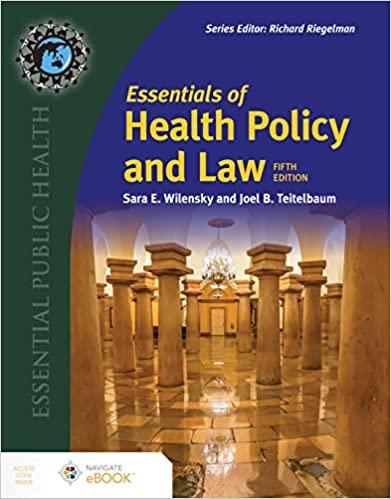1. A time domain real-signal x ( t ) has a Fourier Transform property of X (w ) = X* (-w). Consider the following frequency domain description of a signal G ( w ) : G(@)= 2, 5 5 0 510 0, elsewhere (a) Evaluate g (t ) using the definition of Inverse Fourier Transformation 8(1)= jawedw Plot G(w), Re(g (t) ), and Im(g (t ) ) in a 3x1 subplot for the interval w--31. 4: 0. 01: 31 . 4 and t=-100:0. 1: 100. (b) Now consider Y (w) =G(@-5). Plot Y (w), Re(y (t) ), and Im(y (t) ) in a 3x1 subplot with the same intervals. (c) Are g (t ) and y ( t ) real-signal or complex signal? 2. When the signal g (t ) goes through a filter h (t ) where the frequency domain definition of the filter is: H(@)= 5 00. |0 5 20 0, elsewhere the results in a time domain output signal: m( t). (a) Using convolution theorem, calculate the frequency domain output signal M ( w ) . Plot the magnitude and phase of M( w) in a 2x1 subplot for the interval W=-31 . 4:0. 01:31.4. (b) Evaluate m(t ) using the definition of Inverse Fourier Transformation. Plot Re(m( t) ) and Im(m ( t ) ) in a 2x1 subplot for the interval t=-100 :0. 1 : 100. 3. Calculate the energy of the output signal m (t) for the time range t=-100:0. 1: 100. Also evaluate the energy of the output signal in frequency domain using Parseval's theorem (use the frequency range W=31. 4:0.01:31.4).\fIntroduction to MATLAB Calculations & Plotting Solve the following problems using code generated in MATLAB in a script file (m-file) or a live script file (mix-file). To submit your assignment, publish your code using the MATLAB publisher to a PDF file. Upload your m-file, mix-file (if generated using live script), and your PDF file (upload files separately-no zipped folders, please). Use %% to separate your script files into sections for each problem. Print/report all of your output using the "fprintf" function to show it at the end of each section/problem. 1. The surface to volume ratio of the earth is 7.5753 x 10* miles. Determine an approximate diameter for the earth. 2. The length L of a belt that traverses two pulley wheels, one of radius R and one of radius r and whose centers are distance S apart is given by L = 25coso + IT(R + r) + 20(R -r); where 0 = sin"'((R-r)/5) Determine L when R = 30 cm, r =12 cm, and $ =50 cm. (Remember: MATLAB likes angles in radians).Before you begin, you will need a couple of random matrices. Use L=randi([-10 10], [2 3]) and R-randi( [-10 10]. [3 21) to generate these. You will use these as L and # throughout this assignment. Important: Do not include these randi lines in your file, since that would generate a new & and R each time it is run. Instead, run randi to get L and R and start your file with L-[(whatever you get]]; and R=[(whatever you get)];. 1. Enter your matrices L and R into Matlab. Let A-2 7 Use Matlab to find: (a) AR (b) A x (first column of H) (c) (second row of A) x R (d) How do the answers in (b) and (c) compare to that of (a)? 2. Let B - 5 - Use Matlab to find: (a) LB (b) Without calculating it, what should L x (first column of B) be equal to? (c) Notice that the first column of B is Use Matlab to calculate: 1 x (Ist col of L) + 2 x (2nd col of L) + 3 x (3rd col of L) 2. Let B- 5 Use Matlab to find: -1 (a) LB (b) Without calculating it, what should L x (first column of B) be equal to? (c) Notice that the first column of B is . Use Matlab to calculate: 1 x (Ist col of L) + 2 x (2nd col of L) + 3 x (3rd col of L) (d) What does this match from (a)? (e) Write the second column of LB as a linear combination of the columns of L. (f) Write the second row of LB as a linear combination of the rows of B.3. Using A and B from above (a) Why can you immediately tell that A and # do not have inverses? (b) Find AB and BA manually, showing your calculations. (c) Check your answer to (b) by using Matlab to find AB and BA. (d) Use Matlab to calculate the inverse to AB two different ways, using inv( ) and using rref ( ). (e) If D is the inverse to AB, what two matrix multiplications must be equal to the identity? (f) We said above that A has no inverse. Looking at your answer to (e), use Matlab to find a matrix M such that AM - I. (In such a case, we say A is a right-inverse of .) (g) We said above that B has no inverse. Looking at your answer to (e). use Matlab to find a matrix N such that NB = 1. (In such a case, we say N is a left-inverse of B.) 4. Let Y = (a) Use Matlab to show that, at least in this case, (YZ) = 2 1y-1. (b) Notice we did not conclude that (17) 1- Y 12 1. What should Y-12-1 be equal to ? (c) Use Matlab to show that, at least in this case, (12) = 2TYT. (d) Once more. we did not conclude that (YZ) = YTXT. What should YT/The equal to?












